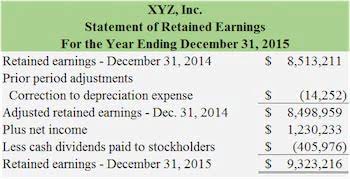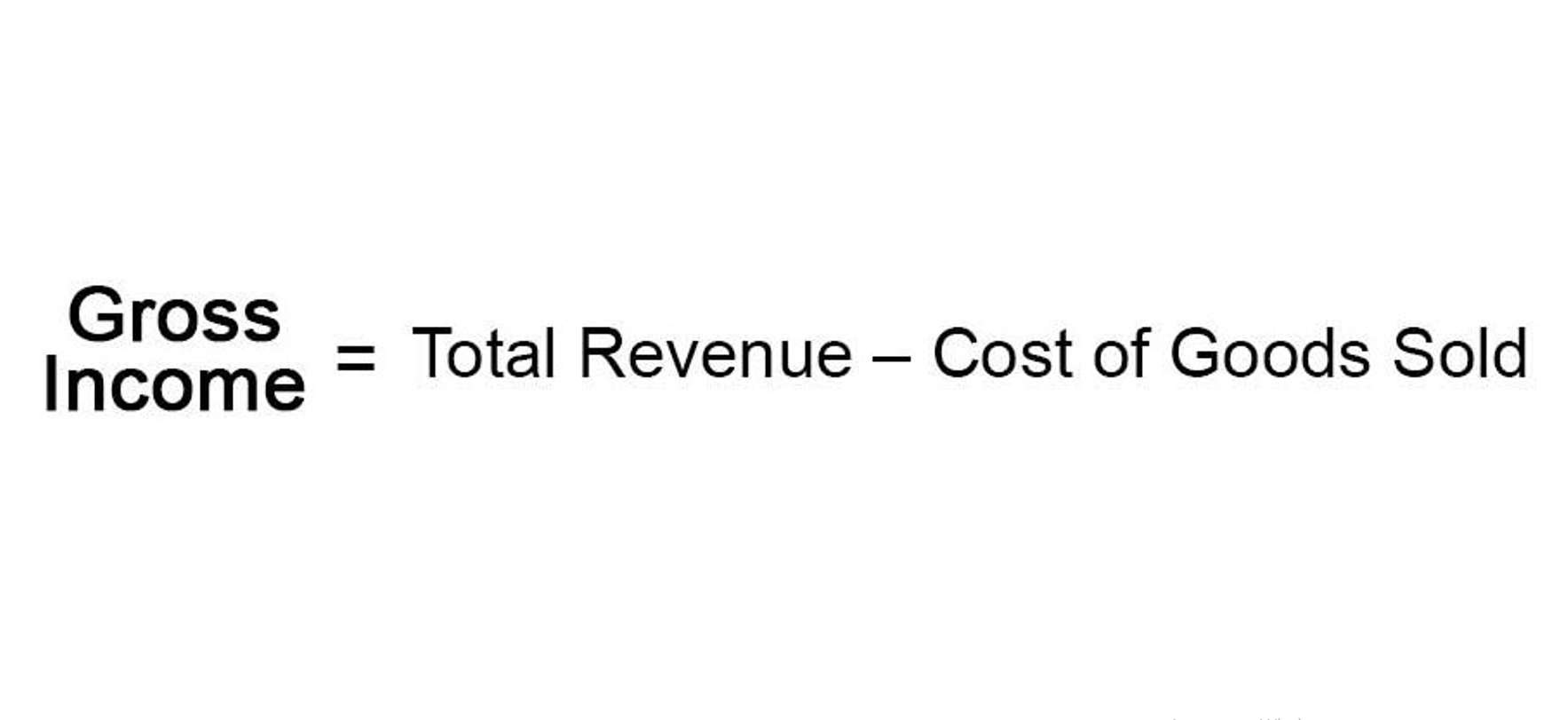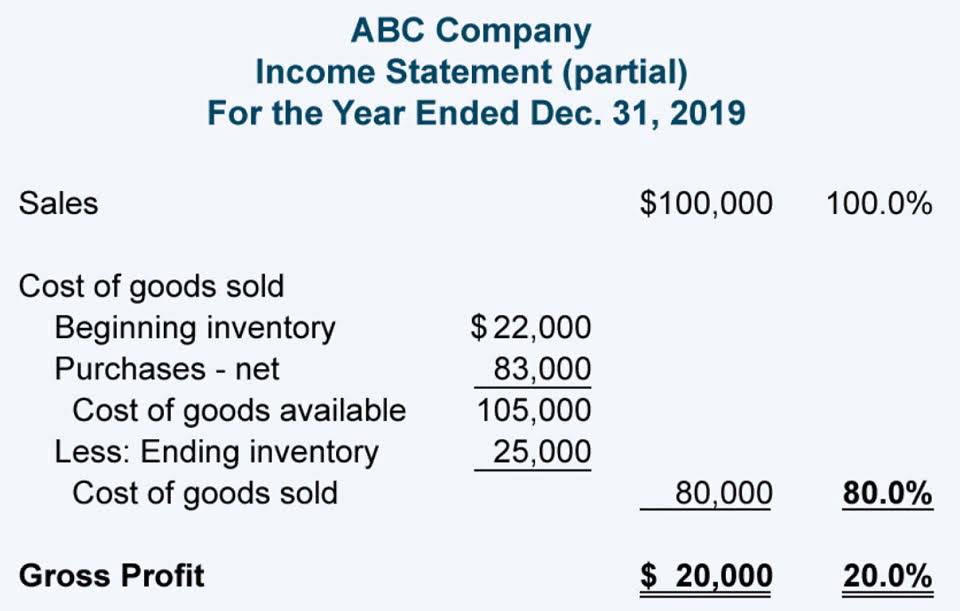Content

In the Comparative Balance Sheet, the figures of assets and liabilities are set out as at the beginning and at the June of the year along with the extent of increases or decreases between the two dates. For starters, in 2016, Apple generated $0.39 for every $1 dollar in sales it made. Google did much better, generated $0.61 for every $1 in sales it made. However, Google’s other costs (such as sales, marketing, general & administrative, and R&D) are much higher, since Google’s EBITDA margin was 33.7%, compared to Apple’s 34.0%. Normally a period is selected as base and all other periods are compared with the base.

Horizontal analysis is used to improve and enhance these constraints during financial reporting. Horizontal analysis can thus give an insight into how a company is growing. It helps identifying growth trends as well as can indicate how efficiently the business is managing its expenses over the years. It can be manipulated by keeping a very weak performance year as the base year, making performance of other comparison years look more attractive than they actually are.
To get a clear picture of the performance of our business, we need to do a horizontal analysis of each item in our income statement. A complete horizontal analysis of the income statement might tell us that while our sales figure increased by 66.67%, our profits declined by 10% over the previous year.
Similar To Horizontal And Vertical Analysis
Horizontal analysis is an approach used to analyze financial statements by comparing specific financial information for a certain accounting period with information from other periods. In Horizontal Financial Analysis, the comparison is made between an item of financial statement, with that of the base year’s corresponding item. On the other hand, in vertical financial analysis, an item of the financial statement is compared with the common item of the same accounting period. This method involves financial statements reporting amounts for several years.

A less-used format is to include a vertical analysis of each year in the report, so that each year shows each line item as a percentage of the total assets in that year. It is important to understand the concept of horizontal analysis because of the following reasons. Any stark deviation in trend may be an indication of some anomaly in reporting that requires immediate investigation.
Because they are turning over their Inventory without the cost of it becoming obsolete. When proportionate changes in the same figure over a given time period expressed as a percentage is known as horizontal analysis. Form the table above we can understand that there was no change in the share capital but the reserve and surplus was increased by 44%. Other liabilities increased by 38%, liquidity increased by 18%, investment, net fixed asset and other assets by 18%, 56% and 15% respectively. The following analysis shows that the portion of the cost of sales has increased by over 4% comparing the records of 2017 and 2016. For example, growth businesses might exhibit signs of growing sales with initially low-profit margins.
You Must Ccreate An Account To Continue Watching
In this way, percentage changes are better for comparative purposes with other firms than are actual dollar changes. Either the data of the rest of the years is expressed as a percentage of the base year or an absolute comparison is performed. Horizontal analysis is an approach to analyzing financial statements. The horizontal analysis comparison is a useful technique on its own. However, for the management and inventors to be able to make better-informed decisions an additional vertical analysis technique is necessary.
For example, you could use horizontal analysis to compare a company’s profit margins in one year to its profit margins in another year. Alternatively, you could use it to pinpoint specific areas of the company that are experiencing the most financial change. Based on your analysis, you could then create recommendations for the company to consider to maximize its financial success. Horizontal analysis of income statements also produces worthwhile information. Several interesting balance sheet changes are apparent in the tables below. There were rises of more than 12% in all categories of property other than transport equipment. Determining the percentage change is important because it links the degree of change to the actual amounts involved.

My boss, Patty, welcomes the new hires and asks, ‘What is horizontal analysis? She said she was a little surprised that no one knew what horizontal analysis was, or maybe we were just shy. I am anxious to start working as a financial analyst at Pies Incorporated. Pies, Inc. was voted the best pies in the Southwest and the largest bakery in the state. After orientation with human resources, I have a meeting with my boss and other new hires in the finance department. The content on finmasters.com is for educational and informational purposes only and should not be construed as professional financial advice.
Accounting Details
If you divide $5,000 by $500,000, you get 0.01, which equates to 1%. Therefore, the company’s utility costs are expressed as 1% of the base figure. You can follow the same process for the rest of the items on the income statement, including rent payments, sales and miscellaneous expenses. Horizontal analysis of the income statement is usually in a two-year format, such as the one shown below, with a variance also shown that states the difference between the two years for each line item. An alternative format is to simply add as many years as will fit on the page, without showing a variance, so that you can see general changes by account over multiple years. A third format is to include a vertical analysis of each year in the report, so that each year shows expenses as a percentage of the total revenue in that year.
Now let’s discuss the differences between horizontal and vertical analysis. Likewise, a large change in dollar amount might result in only a small percentage change which will not cause concern for the business owner. By identifying a problem, businesses can then devise a strategy to cope with it. The key to analysis is to identify potential problems provide the necessary data to legitimize change.
Basis For Comparison
As against, vertical analysis is used to report the stakeholder about the portion of line items to the total, in the current financial year. With the help of this analysis, the percentages so computed can be directly compared with the result of the equivalent percentages of the past years or other companies operating in the same industry, irrespective of their size. So, common size financial statement not only helps in intra-firm comparison but also in inter-firm comparison. In some cases, it may happen that an attempt to increase the sales results in lower net profits.
The changes are depicted both in absolute figures and in percentage terms. Horizontal Analysis is that type of financial statement analysis in which an item of financial statement of a particular year is analysed and interpreted after making its comparison with that of another year’s corresponding item. Comparison of two or more year’s financial data is known ashorizontal analysisortrend analysis. Schellhammer Corporation reported the following amounts in 2016, 2017, and 2018.Perform each of the three types of analysis on Schellhammer’s hammers current assets. The above example of Horizontal analysis shows us that a 66% increase in sales led to a 60% increase in net profits. The increase in Selling and Administrative expenses by 200% (remember Smith’s marketing and Advertisement campaign) explains this gap of 6%. A decrease in proportionate Cost of Goods Sold also contributed to the increase in net profits.
Horizontal Analysis can be performed by comparing a recent year against the base year while identifying the growth trends between the time periods. The analysis can be performed in any four types of financial statement i.e. income statement, balance sheet, statement of cash flow, and statement of changes in equity. However, income statement and balance sheet are mostly used financial statement to do horizontal analysis . There is a possibility of analysts making the current period to appear either good or bad.
Difference Between Horizontal And Vertical Analysis
The proceedings and journals on our platform are Open Access and generate millions of downloads every month. Further adjusting the structure of science and technology input is needed for creating an Innovative Guangdong. The paper analyses the financial input of R&D, capital and investment structure from the vertical and horizontal two aspects over the past decade.
- As an investor, you should be digging into a company’s financial statements.
- For a business owner, information about trends helps identify areas of wide divergence.
- In vertical analysis, balance sheet items and income statement items are expressed in percentage.
- The repair expense is the largest percentage change — an increase in costs.
- By exploring coverage ratios, interest coverage ratio, and cash flow-to-debt ratio, horizontal analysis can establish whether sufficient liquidity can service a company.
- However, it excludes all the indirect expenses incurred by the company.
Most importantly, Financial Analysis points to the financial destination of the business in both the near future and to its long-term trends. Calculate the percentage change by dividing the absolute change by amount of base year and multiplying the result by 100. Let us understand this analysis with the help of the following balance sheet. This causes difficulties, since it’s hard to compare companies of different sizes.
It helps you compare the financial position and performance of your business from one period to the next. Using your findings, you know what’s working well, and can easily see areas that need improvement and require attention. First, run both a comparative income statement and a balance sheet for each of the periods you want to compare.
Trends or changes are measured by comparing the current year’s values against those of the base year. The goal is to determine any increase or decline in specific values. A percentage or an absolute comparison may be used in horizontal analysis. There must be a single base line item and multiple comparison line items.
- Other factors should also be considered, and only then should a decision be made.
- From this, it is able to determine how the efficiency of the company in terms of performance.
- When creating a Vertical Analysis of an Income Statement, the amounts of individual items are calculated as a percentage of Total Sales.
- While Google does spend a lot more on R&D than Apple does, Google’s profit margins remain healthy and strong YoY.
- They can even have a complete picture of an operational result by analyzing financial statement, balance sheet, and cash flow statement at the same time.
- With horizontal analysis, you look at changes line-by-line, between specific accounting periods – whether it be monthly, quarterly, or annually.
By using horizontal analysis, we can now clearly see that Google’s revenue, gross profit, and EBITDA grew faster than Apple’s in every year except for 2015 , with 2016 looking particularly rough for Apple. Note that the line-items are a condensed Balance Sheet and that the amounts are shown as dollar amounts and as percentages and the first year is established as a baseline. It depicts the amount of change as a percentage to show the difference over time as well as the dollar amount. Each line item shows the percentage change from the previous period. Tabitha graduated from Jomo Kenyatta University of Agriculture and Technology with a Bachelor’s Degree in Commerce, whereby she specialized in Finance.
Comparative Income Statement With Horizontal Analysis:
Therefore, financial analysis can contribute heavily to a company’s overall success. Indeed, sometimes companies change the way they break down their business segments to make the horizontal analysis of growth and profitability trends more difficult to detect. Accurate analysis can be affected by one-off events and accounting charges. It helps investors analyze and ascertain whether the company has had consistent growth over the years and if they are utilizing fund available in a balanced way. The horizontal analysis as the name suggest is the analysis done on horizontal basis for the same item of a company’s financial statements generally for two or more years. It analyses the trend of the company by calculating the change percentage between the same line item for various years. On the other hand the vertical analysis is done by comparing the line items vertically in a financial statement with the total of either sales or assets .
Horizontal Company Financial Statement Analysis
Providing students with an overview of financial statements using the Dupont analysis approach. As a financial statement, balance sheet is concerned with summarizing assert owned by the firm and sources of borrowing and owned funds in acquiring these assets. Figure shows a hypothetical balance sheet of Annapurna Textile Inc. as on June 2018. From the analysis, we can make out that both cash and prepaid expenses increased in 2017 compared to 2016.
This method is particularly useful for both internal analysis to identify areas of growth and external analysis by investors or lenders who want to see demonstrable growth before committing their resources to your business. Finally, take the amounts from the column and calculate each amount as a percentage of the base figure, which has a value of 100%. Review the ratios to determine the company’s financial state, and make recommendations as necessary.
The comparability constraint dictates that your statements and documents need to be evaluated against companies similar to yours within the same industry. https://www.bookstime.com/ improves and enhances the constraints during financial reporting. Horizontal analysis can help you compare a company’s current financial status to its past status, while vertical analysis can help you compare one company’s financial status to another’s. Analyze the data to look for potential problems or opportunities for the company.
However, when using the analysis technique, the comparison period can be made to appear uncommonly bad or good. It depends on the choice of the base year and the chosen accounting periods on which the analysis starts. Also referred to as trend analysis, this is the comparison of financial information such as net income or cost of goods sold between two financial quarters including quarters, months or years. Often expressed in percentages or monetary terms, it provides insights into factors that significantly affect the profitability of an organization.